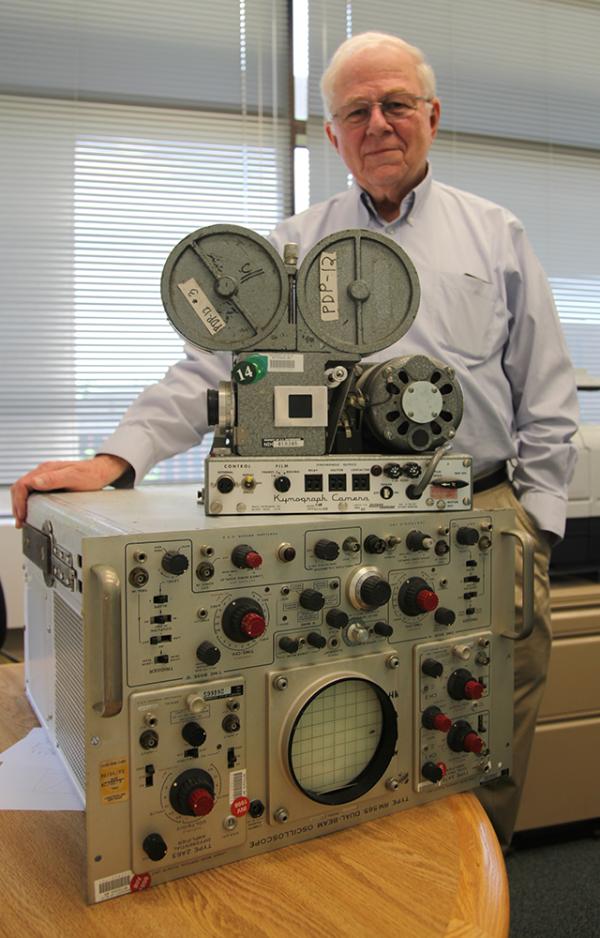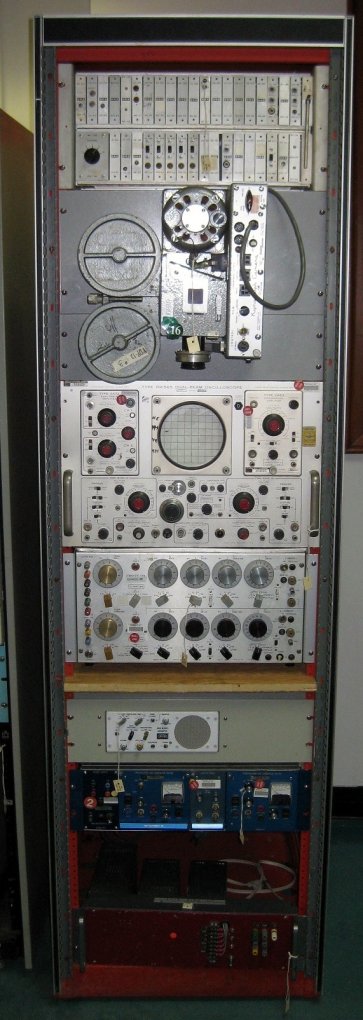Developing Methods to Study the Brain's Visual System in Action
This month we’re sharing the stories of recent additions to the NIH DeWitt Stetten, Jr., Museum of Medical Research.
How does the brain know that what we’re looking at is standing still or moving? Dr. Robert H. Wurtz developed methods for studying the visual system in awake behaving monkeys, a technique now widely used for the study of higher brain functions, to find the answer to that question.
He built the apparatus shown above and below, consisting of computer boards, a recording camera, oscilloscope, audio monitor, and various electronic components such as preamplifiers, which was used in his experiments. Later he remembers, “More complex tasks [for the monkeys] required better control of the multiple events in the experiments: continuous recording of behavioral responses, eye position, neuronal activity, and modifications to the stimuli presented to the monkey. DigiBits would not suffice.”
Dr. Wurtz was the founding chief of the Laboratory of Sensorimotor Research at the NIH National Eye Institute. Read his entertaining and educational autobiography to learn more about his life and research.

Dr. Robert Wurtz displays the camera component of his eye movement recording apparatus.

The entire Wurtz eye movement recording apparatus
Related Blog Posts
This page was last updated on Monday, January 29, 2024
